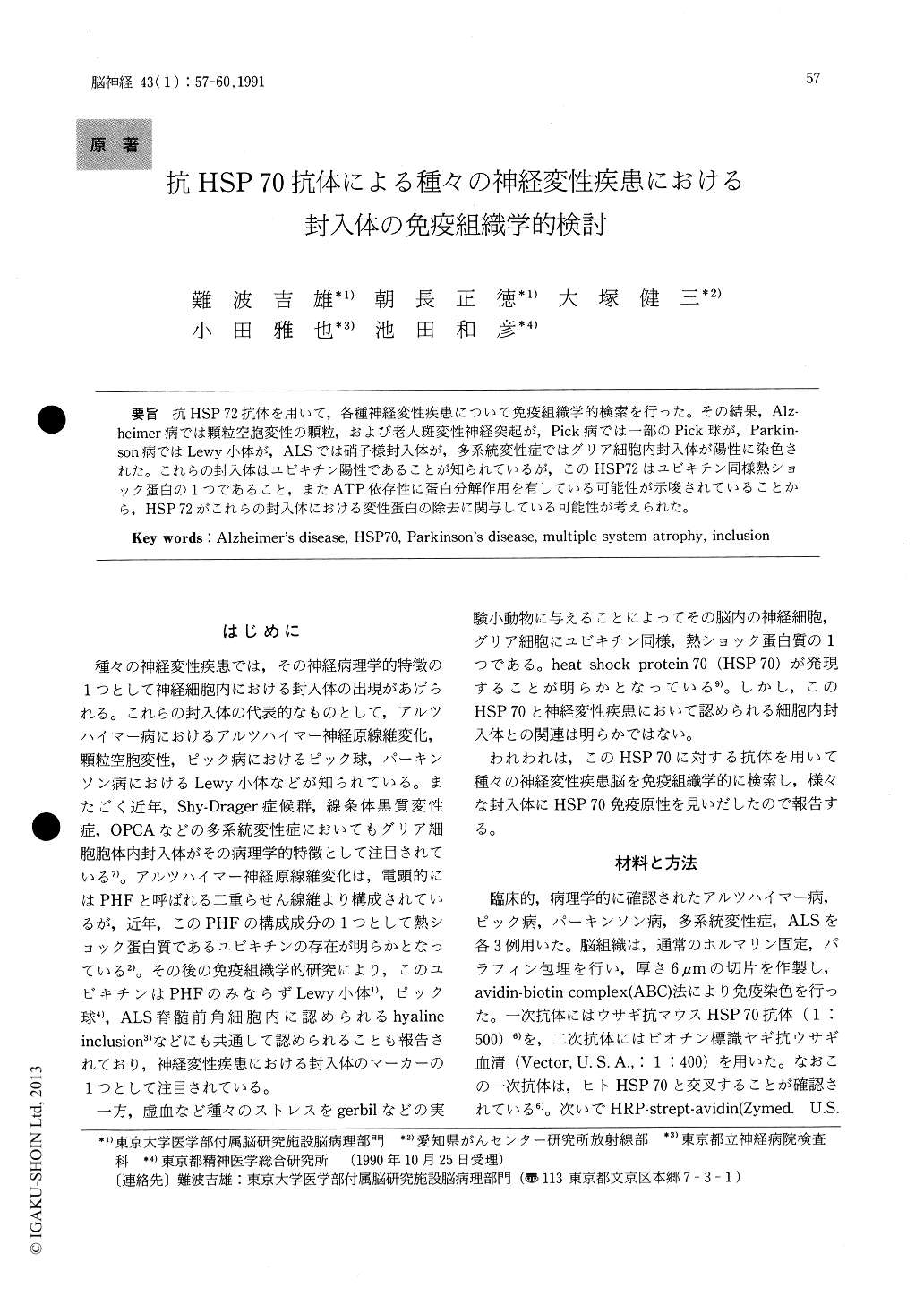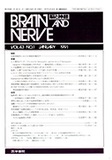Japanese
English
- 有料閲覧
- Abstract 文献概要
- 1ページ目 Look Inside
抗HSP 72抗体を用いて,各種神経変性疾患について免疫組織学的検索を行った。その結果,Alz—heimer病では顆粒空胞変性の顆粒,および老人斑変性神経突起が,Pick病では一部のPick球が,Parkin—son病ではLewy小体が,ALSでは硝子様封入体が,多系統変性症ではグリア細胞内封入体が陽性に染色された。これらの封入体はユビキチン陽性であることが知られているが,このHSP72はユビキチン同様熱ショック蛋白の1つであること,またATP依存性に蛋白分解作用を有している可能性が示唆されていることから,HSP72がこれらの封入体における変性蛋白の除去に関与している可能性が考えられた。
Several degenerative diseases of the central ner-vous system are characterized by the presence of neuronal inclusions. One of these inclusions, neurofi-brillary tangles in Alzheimer's disease, has been shown to contain ubiquitin that belongs to a group of proteins known as heat shock proteins. Subse-quent studies revealed that ubiquitin is also as-sociated with various neuronal inclusions including Lewy bodies, Pick bodies and hyaline inclusions. Very recently, ubiquitin has been found also to be associated with glial inclusions that are unique to multiple system atrophy. The close association of ubiquitin with varying cellular inclusions, together with its function in the proteolytic process, raised the hypothesis that ubiquitin may be involved in the degradation of abnormal proteins appearing in the damaged neurons and glial cells.
In central nervous system, a group of heat shock proteins collectively known as HSP 70 is also pres-ent which is constitutive and/or inducible. Since HSP 70 has been suspected to play a crucial role degradation and repair of abnormal intracellularproteins, we hypothesized that HSP 70 may be as-sociated with those inclusions, as the case with ubiquitin. To test this we performed immunohisto-chemical studies on brain tissues from patients with various neurodegenerative conditions by using spe-cific polyclonal antibody to HSP 70.
Brain tissues were obtained at autopsy from each three patients with Alzheimer's disease, Pick's dis-ease, Parkinson's disease, amyotrophic lateral sclerosis (ALS) and multiple system atrophy. Tissues were fixed in buffered formalin and embedded in paraffin. Immunostaining was performed by the standard ABC method using diaminobenzidine as a chromogen. Sections were lightly stained with hematoxylin. Polyclonal antibodies were raised in rabbits against mouse HSP 70. This antibody was verified to react with human HSP 70 in an im-munoblot assay. In addition to immunostained sec-tions, sections stained with hematoxylin and eosin, Kluver-Barrera, and Bielschowsky silver impregna-tion were examind.
Immunoreactivity for HSP 70 was observed in major types of neuronal and glial inclusions that appeared in the present study, excluding neurofibril-lary tangles. In the brain sections of AD, granules of granulovacuolar degeneration were strongly stained. Degenerated neurites around senile plaques were also stained, while neurofibrillary tangles and neuropil threads were negative. In Pick's disease, very few Pick bodies were stained in some cases. In Parkinson's disease, majority of Lewy bodies pres-ent both in brain stem and cerebral cortex were positively stained. In the spinal cord of ALS, hyaline inclusions were stained, however Bunina bodies were not stained. In multiple system atrophy, the inclusions that appear in glial cells were strongly stained.
Thus the present studies demonstrated for the first time that HSP 70 immunoreactivity was as-sociated with various types of cellular inclusions of neurodegenerative diseases. It could be possible that HSP 70 may be involved in the process of degenera-tion and repair of abnormal proteins. HSP 70 may serve as a marker for certain inclusions.

Copyright © 1991, Igaku-Shoin Ltd. All rights reserved.


